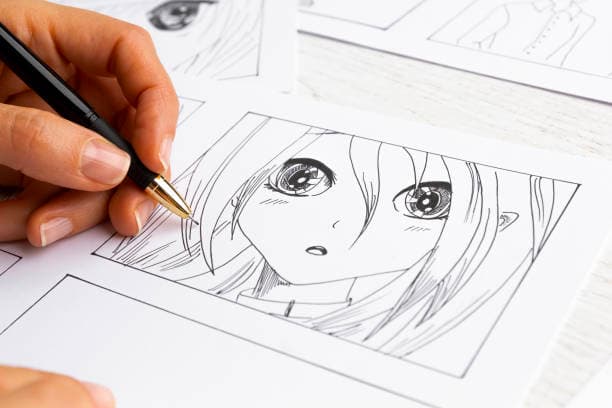Comics’ visual aesthetics and narrative quality create an immersive storytelling experience unlike any other media. Comic books have inspired millions with tales of courage, mystery, and wonder. This study of comic book storytelling will cover everything from the visual language that guides readers through panels to the combined efforts of writers, artists, and creators who bring characters and plots to life.
The Visual Language of Comics
Imagine a canvas where words and images blend to guide readers through a story. Comic books are visual narratives using panels, gutters, speech bubbles, and captions. Each element affects how readers view and interact with the story.
Panels, and comic frames, reveal the story. They pace the tale, with smaller panels implying rapid events and larger panels allowing for more substantial developments.
The gutters between panels are where readers’ imaginations flourish. They fill in spaces between moments, encouraging readers to actively participate in the plot.
Captions and speech bubbles offer thoughts and narrative. Font, size, and location convey character traits, mood, and urgency. The visual arrangement of these pieces can greatly affect reading.
The Power of Panel Layout
Panel arrangement is a subtle but important technique for comic book artists. It controls the reader’s attention and emotions, affecting the story’s pace and tone. Artists manage story flow using panel size, shape, and placement.
A well-designed panel layout can build tension by progressively zooming in on a character’s face during a vital moment. It can convey grandeur with a full-page spread showing a stunning landscape or climactic battle. Overlapping panels or circular sequences can complicate and enhance storytelling.
Balancing Art and Text
Text and images are delicately balanced in comics. In addition to the artwork, conversation, narration, and onomatopoeia portray character personalities, atmosphere, and action.
The dialogue gives characters personalities and advances the plot. Effective speech can disclose interpersonal intricacies, emotions, and character motivations.
Readers hear a character’s thoughts, opinions, and insights through narration. It enriches the story by revealing a character’s thoughts.
Action situations are energised by onomatopoeia like “Pow!” and “Thwip!” The artwork is dynamically enhanced by its visual portrayal of sound.
The Role of Splash Pages and Double-Page Spreads
Splash pages and double-page spreads are the peak of comic book visual narrative. These pages are intentionally placed in a comic to generate dramatic reveals, epic battles, and important moments that make a lasting impact.
A splash page usually has a large, eye-catching image. It usually introduces a main character, depicts a climax, or sets the story’s tone.
Double-page spreads allow artists to display magnificent images over two pages. These spreads showcase a comic’s most impressive and dramatic scenes, leaving readers in awe.
Character Expressions and Body Language
Comic book artists understand character expressions and body language to communicate emotions, thoughts, and relationships. They know that a well-drawn countenance may say volumes without much discussion.
A character’s inner conflict or enjoyment might be revealed by a furrowed brow, wry smile, or raised eyebrow. Slumped shoulders, clenched fists, and confident strides might reveal a character’s emotions and intentions. These details let readers bond with personalities beyond the page.

Narrative Techniques in Comics
Comic book creators can tell non-linear stories. They use numerous narrative approaches to deepen and complicate their stories. For instance, flashbacks reveal a character’s motivations and backstory. Montages visually demonstrate character growth or time passing. Parallel storytelling creates suspense by weaving multiple stories together.
The Evolution of Storytelling Styles
Over time, comic book storytelling has changed with tastes and creativity. From simple Golden Age comics to complex graphic novels, the medium has changed dramatically.
Alan Moore and Frank Miller have created complex stories that defy convention. They demonstrate that comics can cover difficult subjects, social challenges, and thought-provoking criticism.
Conclusion
Comic book storytelling combines visual and narrative excellence. Comic book narrative, from panel layouts to character expressions, can transport readers to other realms, stir emotions, and spark thought.
Comic books are more than superheroes and adventures—they’re a unique type of narrative that captivates all ages. Next time you pick up a comic book, enjoy the exquisite artwork and skill in every panel. It shows how storytelling can transcend words and imagery to create unforgettable stories that touch us all.